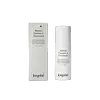What's inside
What's inside
 Key Ingredients
Key Ingredients

 Benefits
Benefits

 Concerns
Concerns

 Ingredients Side-by-side
Ingredients Side-by-side

Water
Skin ConditioningPentylene Glycol
Skin ConditioningC15-19 Alkane
SolventCetyl Alcohol
EmollientBetaine
HumectantSqualane
EmollientCoco-Caprylate/Caprate
EmollientGlycerin
HumectantButyrospermum Parkii Butter
Skin ConditioningDimethyl Isosorbide
SolventPolyglyceryl-3 Methylglucose Distearate
EmulsifyingTocopheryl Acetate
AntioxidantHydroxypinacolone Retinoate
Skin ConditioningHydrolyzed Hyaluronic Acid
HumectantGluconolactone
Skin ConditioningSodium Hyaluronate
HumectantLactobacillus Ferment
Skin ConditioningLactobacillus
Skin ConditioningCocos Nucifera Fruit Extract
EmollientCeramide NP
Skin ConditioningTocopherol
AntioxidantCetearyl Alcohol
EmollientIsocetyl Alcohol
EmollientEthylhexylglycerin
Skin ConditioningXanthan Gum
EmulsifyingCetearyl Glucoside
EmulsifyingSodium Stearoyl Glutamate
CleansingSodium Gluconate
Skin ConditioningCitric Acid
BufferingWater, Pentylene Glycol, C15-19 Alkane, Cetyl Alcohol, Betaine, Squalane, Coco-Caprylate/Caprate, Glycerin, Butyrospermum Parkii Butter, Dimethyl Isosorbide, Polyglyceryl-3 Methylglucose Distearate, Tocopheryl Acetate, Hydroxypinacolone Retinoate, Hydrolyzed Hyaluronic Acid, Gluconolactone, Sodium Hyaluronate, Lactobacillus Ferment, Lactobacillus, Cocos Nucifera Fruit Extract, Ceramide NP, Tocopherol, Cetearyl Alcohol, Isocetyl Alcohol, Ethylhexylglycerin, Xanthan Gum, Cetearyl Glucoside, Sodium Stearoyl Glutamate, Sodium Gluconate, Citric Acid
Water
Skin ConditioningCaprylic/Capric Triglyceride
MaskingOleyl Erucate
EmollientGlycerin
HumectantTriheptanoin
Skin ConditioningCetearyl Olivate
Sorbitan Olivate
EmulsifyingCyclodextrin
AbsorbentHydroxyethyl Acrylate/Sodium Acryloyldimethyl Taurate Copolymer
Emulsion StabilisingBiosaccharide Gum-1
HumectantAllantoin
Skin ConditioningRetinal
Skin ConditioningRubus Chamaemorus Seed Oil
Skin ConditioningPanthenol
Skin ConditioningCitric Acid
BufferingTocopheryl Acetate
AntioxidantDisodium EDTA
Pentylene Glycol
Skin ConditioningLonicera Japonica Flower Extract
Skin ConditioningLonicera Caprifolium Flower Extract
PerfumingEthylhexylglycerin
Skin ConditioningPhenoxyethanol
PreservativeWater, Caprylic/Capric Triglyceride, Oleyl Erucate, Glycerin, Triheptanoin, Cetearyl Olivate, Sorbitan Olivate, Cyclodextrin, Hydroxyethyl Acrylate/Sodium Acryloyldimethyl Taurate Copolymer, Biosaccharide Gum-1, Allantoin, Retinal, Rubus Chamaemorus Seed Oil, Panthenol, Citric Acid, Tocopheryl Acetate, Disodium EDTA, Pentylene Glycol, Lonicera Japonica Flower Extract, Lonicera Caprifolium Flower Extract, Ethylhexylglycerin, Phenoxyethanol
 Reviews
Reviews

Ingredients Explained
These ingredients are found in both products.
Ingredients higher up in an ingredient list are typically present in a larger amount.
Citric Acid is an alpha hydroxy acid (AHA) naturally found in citrus fruits like oranges, lemons, and limes.
Like other AHAs, citric acid can exfoliate skin by breaking down the bonds that hold dead skin cells together. This helps reveal smoother and brighter skin underneath.
However, this exfoliating effect only happens at high concentrations (20%) which can be hard to find in cosmetic products.
Due to this, citric acid is usually included in small amounts as a pH adjuster. This helps keep products slightly more acidic and compatible with skin's natural pH.
In skincare formulas, citric acid can:
While it can provide some skin benefits, research shows lactic acid and glycolic acid are generally more effective and less irritating exfoliants.
Most citric acid used in skincare today is made by fermenting sugars (usually from molasses). This synthetic version is identical to the natural citrus form but easier to stabilize and use in formulations.
Read more about some other popular AHA's here:
Learn more about Citric AcidEthylhexylglycerin (we can't pronounce this either) is commonly used as a preservative and skin softener. It is derived from glyceryl.
You might see Ethylhexylglycerin often paired with other preservatives such as phenoxyethanol. Ethylhexylglycerin has been found to increase the effectiveness of these other preservatives.
Glycerin is already naturally found in your skin. It helps moisturize and protect your skin.
A study from 2016 found glycerin to be more effective as a humectant than AHAs and hyaluronic acid.
As a humectant, it helps the skin stay hydrated by pulling moisture to your skin. The low molecular weight of glycerin allows it to pull moisture into the deeper layers of your skin.
Hydrated skin improves your skin barrier; Your skin barrier helps protect against irritants and bacteria.
Glycerin has also been found to have antimicrobial and antiviral properties. Due to these properties, glycerin is often used in wound and burn treatments.
In cosmetics, glycerin is usually derived from plants such as soybean or palm. However, it can also be sourced from animals, such as tallow or animal fat.
This ingredient is organic, colorless, odorless, and non-toxic.
Glycerin is the name for this ingredient in American English. British English uses Glycerol/Glycerine.
Learn more about GlycerinPentylene glycol is typically used within a product to thicken it. It also adds a smooth, soft, and moisturizing feel to the product. It is naturally found in plants such as sugar beets.
The hydrophilic trait of Pentylene Glycol makes it a humectant. As a humectant, Pentylene Glycol helps draw moisture from the air to your skin. This can help keep your skin hydrated.
This property also makes Pentylene Glycol a great texture enhancer. It can also help thicken or stabilize a product.
Pentylene Glycol also acts as a mild preservative and helps to keep a product microbe-free.
Some people may experience mild eye and skin irritation from Pentylene Glycol. We always recommend speaking with a professional about using this ingredient in your routine.
Pentylene Glycol has a low molecular weight and is part of the 1,2-glycol family.
Learn more about Pentylene GlycolTocopheryl Acetate is AKA Vitamin E. It is an antioxidant and protects your skin from free radicals. Free radicals damage the skin by breaking down collagen.
One study found using Tocopheryl Acetate with Vitamin C decreased the number of sunburned cells.
Tocopheryl Acetate is commonly found in both skincare and dietary supplements.
Learn more about Tocopheryl AcetateWater. It's the most common cosmetic ingredient of all. You'll usually see it at the top of ingredient lists, meaning that it makes up the largest part of the product.
So why is it so popular? Water most often acts as a solvent - this means that it helps dissolve other ingredients into the formulation.
You'll also recognize water as that liquid we all need to stay alive. If you see this, drink a glass of water. Stay hydrated!
Learn more about Water